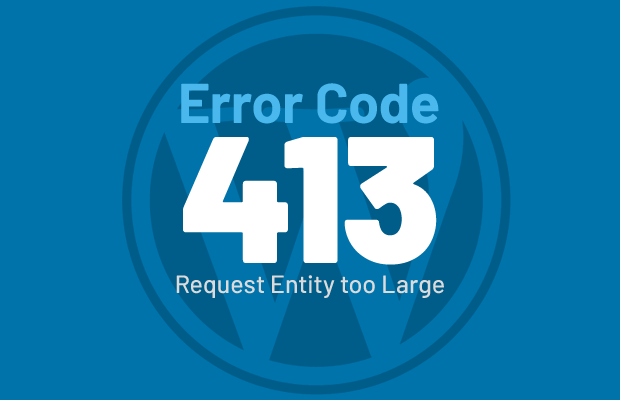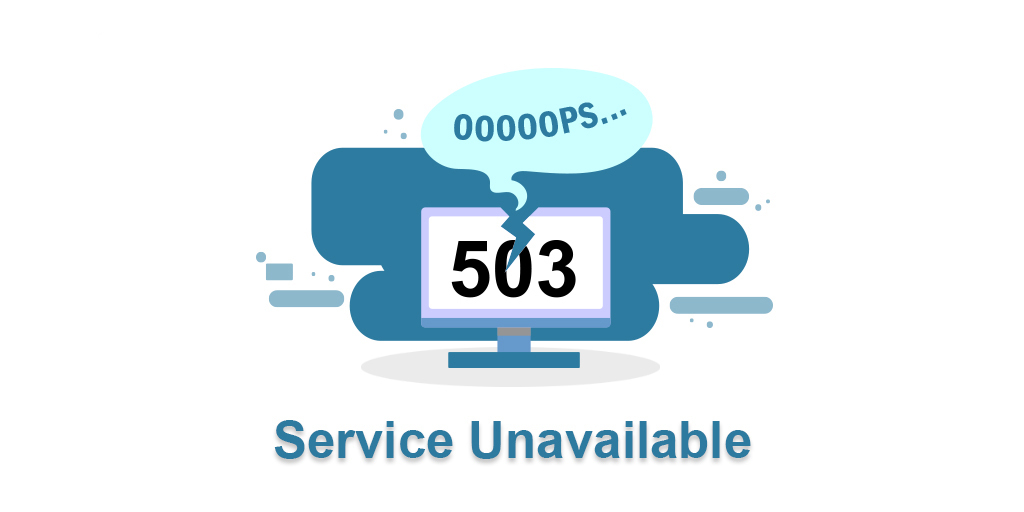HTTP, or Hypertext Transfer Protocol, is the foundation of communication on the World Wide Web. It is a protocol that enables the exchange of information between a client, such as a web browser, and a server. With the HTTP protocol, users can request and receive resources, such as web pages, images, videos, and more.
HTTP operates on a client-server model, where the client sends requests to the server, and the server responds with the requested resources or status information. This protocol forms the backbone of web browsing and data exchange, making it essential for the functioning of the internet.
Significance of HTTP
Web Browsing: HTTP is the underlying protocol that allows users to browse websites, access online content, and interact with web applications. It ensures the seamless retrieval and delivery of web pages and resources.
Data Transfer: HTTP facilitates the transfer of data between clients and servers. Whether it's uploading files, submitting form data, or transferring API data, HTTP enables the secure and efficient exchange of information over the internet.
Compatibility: HTTP is widely supported across various platforms and devices, making it compatible with different web browsers, operating systems, and web servers. This compatibility ensures that users can access web content regardless of their preferred devices or environments.
Statelessness: HTTP is a stateless protocol, which means that each request is independent and does not carry any information about previous requests. This statelessness makes it scalable and simplifies server management, allowing for better performance and reliability.
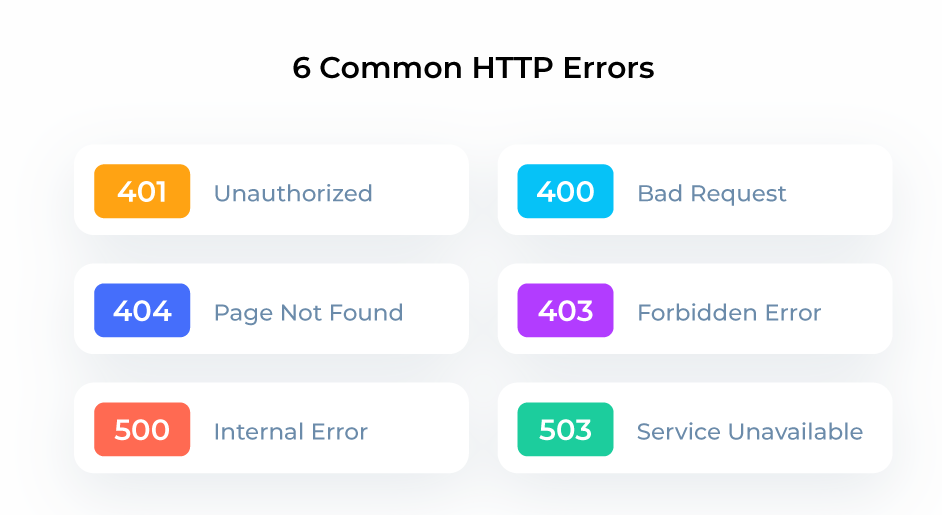
HTTP Status Codes
HTTP status codes are three-digit numbers that the server includes in its response to indicate the status of the request. These codes provide information about whether the request was successful, encountered an error, or requires further action. One of the most common HTTP status code categories is the 4xx series, which indicates client-side errors.
Focus on HTTP Error 413 - Request Entity Too Large
HTTP Error 413 occurs when the server rejects a request because the payload, such as a file or data, exceeds the server's configured size limit. This error typically indicates that the request entity is too large for the server to handle or process.
The HTTP Error 413 status code notifies the client that the request needs to be modified, typically by reducing the size of the payload or splitting it into smaller parts. It is important to note that the maximum allowed request size can vary depending on the server's configuration.
Encountering HTTP Error 413 can be frustrating, but it serves as a safeguard against overwhelming the server and ensures efficient resource allocation. To resolve this error, clients can adjust their request payload size, compress files, or use alternative methods for transmitting large data sets, such as chunked encoding.
Understanding the significance of HTTP and familiarizing ourselves with different HTTP status codes, including HTTP Error 413, helps us navigate the web and troubleshoot issues effectively. By interpreting these status codes, we can gain insights into the state of our requests and take appropriate actions for a smooth web experience.
Understanding HTTP Error 413
HTTP Error 413, also known as "Request Entity Too Large," is an HTTP status code that occurs when the server refuses to process a request because the payload or data size exceeds the server's configured limit. This error is usually encountered when attempting to upload or transmit a file or data that exceeds the maximum allowed size set by the server.
When an HTTP request is made, it includes a request header and an optional request body or payload. The request body contains the data being sent to the server, such as a file attachment or form data. The server, in turn, has a maximum limit set for the size of the request it can handle. If the size of the request payload exceeds this limit, the server responds with HTTP Error 413.
HTTP Error 413 is a client-side error, meaning that it is triggered by the size of the request made by the client. It is important to note that the specific limit for the maximum request size can vary depending on the server configuration. Some servers may have a fixed size limit, while others allow customization or adjustment of the limit.
Encountering HTTP Error 413 can happen in various scenarios, such as when uploading large files to a web application, submitting form data with excessive content, or transmitting bulk data sets. This error serves as a protective measure for the server, preventing it from being overwhelmed by excessively large requests that could potentially impact its performance and stability. By understanding HTTP Error 413 and implementing the necessary measures to handle large requests, you can ensure smoother data transmission and improve the overall user experience when interacting with web applications.
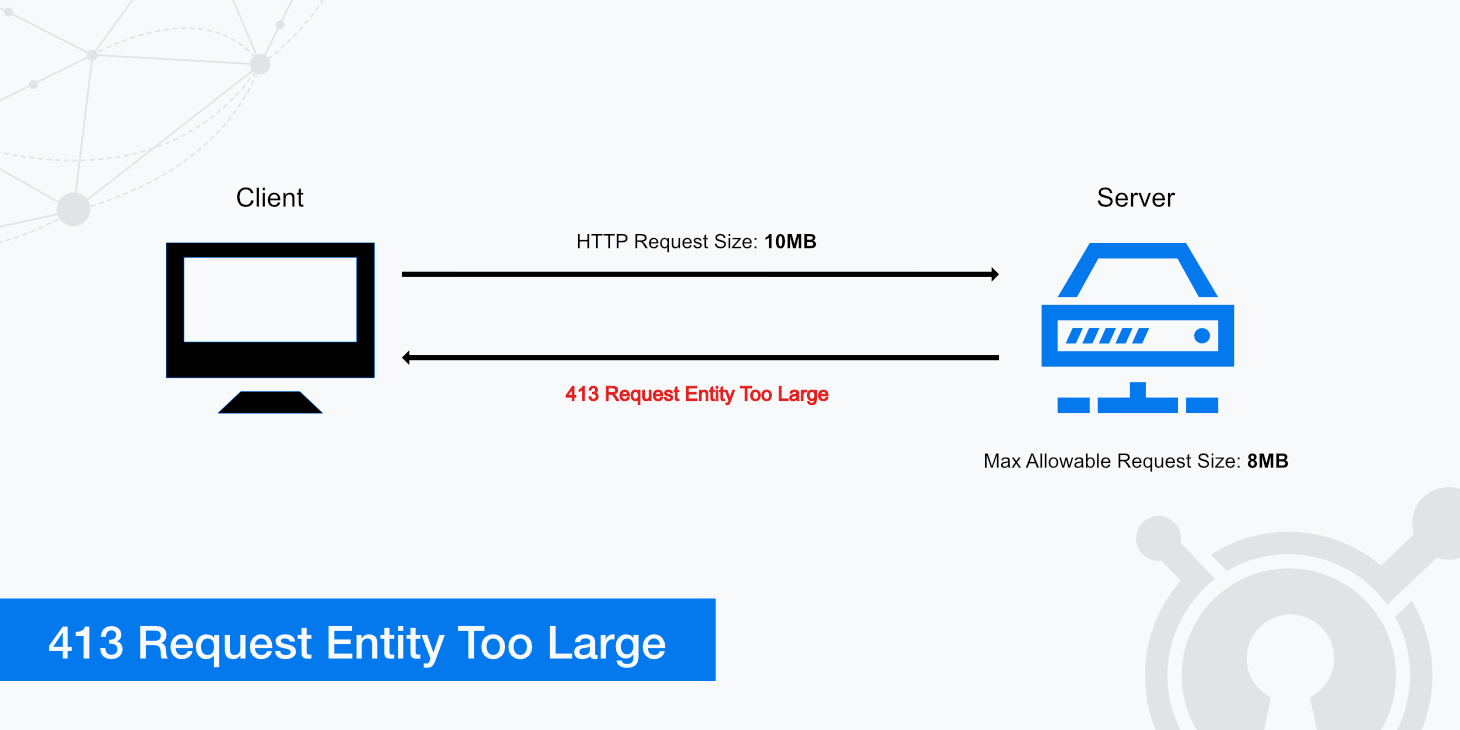
Diagnosing HTTP Error 413
Diagnosing HTTP Error 413, also known as "Request Entity Too Large," involves identifying the cause of the error and pinpointing the specific components or settings that may be contributing to it. Here are some steps to diagnose the error:
Check the error message: When encountering HTTP Error 413, the server typically provides an error message that includes details about the error. This message may vary depending on the server configuration or the web application being used. Look for any specific information or error codes provided in the message, as it can offer insights into the cause of the error.
Review the request payload: HTTP Error 413 occurs when the size of the request payload exceeds the server's configured limit. Analyze the content you are trying to send in the request, such as file attachments, form data, or any other data being transmitted. Verify if the size of the payload is indeed too large and if it exceeds any predefined limits.
Check server configuration: The server may have specific settings or configurations that limit the size of the request payload it can handle. Review the server configuration files, such as the Apache or Nginx configuration files, to check if there are any restrictions set for the maximum allowed request size. Ensure that the server configuration aligns with your requirements and adjust the settings if necessary.
Examine application-specific limitations: Some web applications or frameworks may impose their own limits on request sizes. If you are using a particular application or framework, consult its documentation or configuration files to determine if there are any restrictions in place. Make sure the request size falls within the acceptable limits defined by the application.
Analyze network infrastructure: In some cases, network devices, such as load balancers, firewalls, or proxy servers, may also have limitations on request sizes. Review the network infrastructure setup and examine the configuration of these devices to ensure they are not imposing any restrictions on the request size. Adjust the configurations if needed.
Test with different payloads: To further diagnose the issue, try sending different payloads of varying sizes to the server. This can help determine if the error is specific to a particular payload size or if it occurs consistently across all payloads. By experimenting with different sizes, you can gather more data to pinpoint the root cause of the error.
Consult server logs: Server logs can provide valuable information about the request and the error encountered. Check the server logs for any entries related to the HTTP Error 413. Look for any specific error codes, timestamps, or additional details that can assist in identifying the cause of the error. The logs can be found in the server's log files, which are typically located in a specific directory on the server.
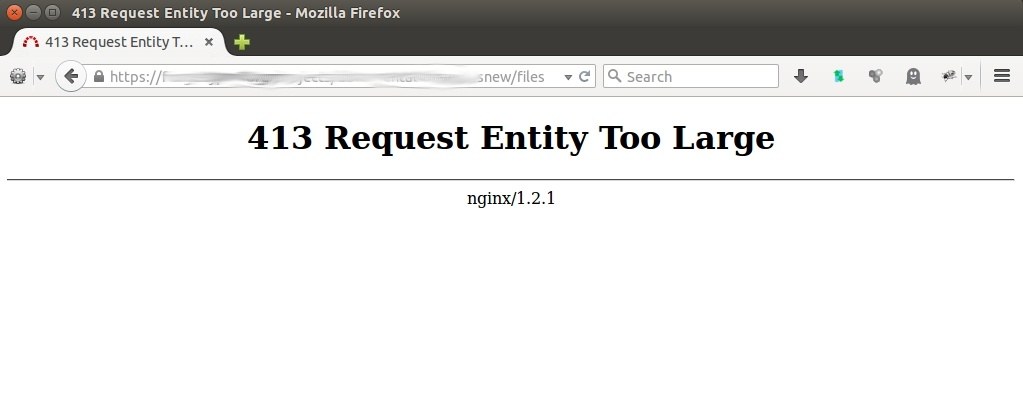
Resolving HTTP Error 413
Resolving HTTP Error 413, also known as "Request Entity Too Large," involves implementing various solutions to ensure that the request payload falls within the server's configured limits. Here are some strategies to fix the error:
Adjust server configuration: If you have access to the server configuration files, you can modify the settings to increase the maximum allowed request size. This involves adjusting parameters such as client_max_body_size in Nginx or LimitRequestBody in Apache. Consult the documentation or seek assistance from the server administrator to make the necessary changes.
Use server modules or plugins: Some server software, like Nginx or Apache, offer specific modules or plugins that allow you to manage request size limits. For example, Nginx has the client_max_body_size directive, while Apache provides the LimitRequestBody directive. Enable and configure these modules or plugins to increase the request size limit.
Split large requests: If you frequently encounter HTTP Error 413 when sending large payloads, consider splitting the request into smaller parts. This can be done by implementing chunked encoding, where the payload is divided into smaller chunks that are transmitted separately. This approach allows the server to handle the request in manageable portions.
Compress the payload: If the request payload includes large files or data, consider compressing them before sending. Compression reduces the overall size of the payload, making it more likely to fit within the server's limits. Use compression algorithms like GZIP to compress the data before transmission.
Optimize file sizes: If the error occurs specifically when uploading files, you can optimize the file sizes to reduce their overall size. For example, you can resize images to a smaller resolution or compress files using appropriate compression algorithms. This can help ensure that the files fit within the server's limits.
Implement client-side restrictions: If you have control over the client-side application or form, you can enforce restrictions on the size of the data being sent. Validate the data on the client side and display appropriate error messages if the payload exceeds the allowable limits. This can help prevent the submission of oversized requests.
Use alternative methods for large data transfers: If the nature of your application involves frequently sending large data sets, consider utilizing alternative methods for data transfers. This can include using FTP (File Transfer Protocol), cloud storage services, or dedicated file-sharing platforms. Upload the large files to these platforms and provide the necessary links or references in the requests, rather than including the files directly.
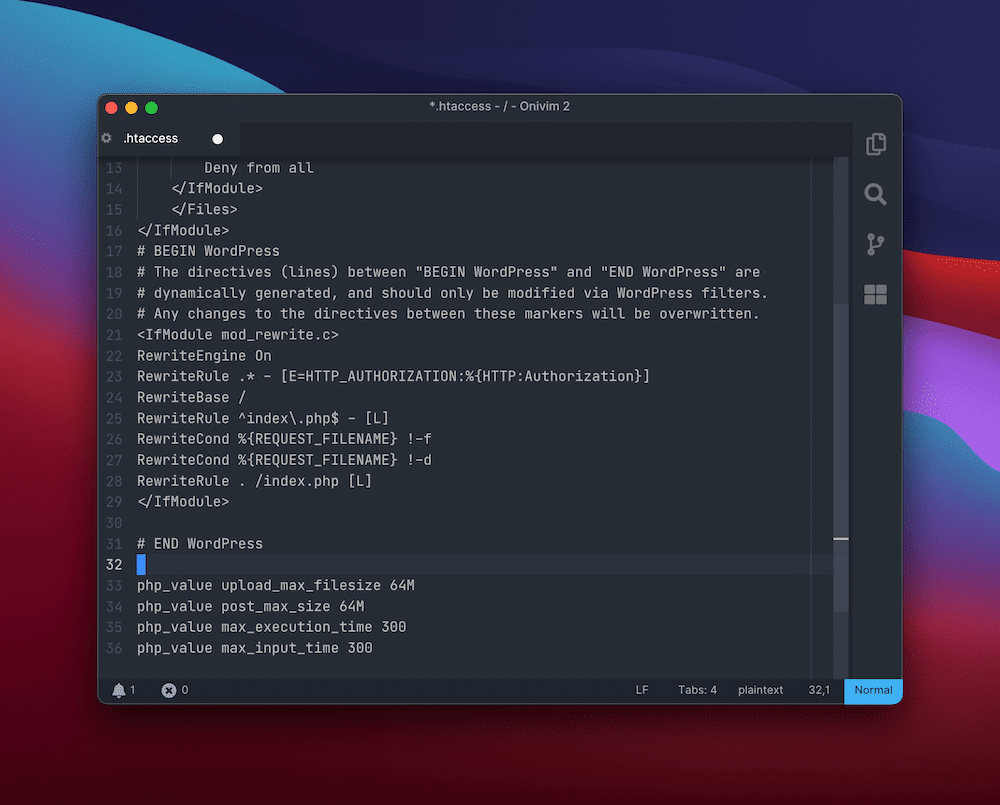
Preventive Measures Against HTTP Error 413
To prevent encountering HTTP Error 413, also known as "Request Entity Too Large," you can take several preventive measures. These measures focus on managing the request payload size and ensuring it falls within the server's limits. Here are some preventive strategies:
Assess server configuration: Review the server configuration files, such as those for Apache or Nginx, and ensure that the maximum allowed request size is set appropriately. Adjust the configuration parameters, such as client_max_body_size or LimitRequestBody, to accommodate the expected payload size.
Implement client-side validations: Apply client-side validations to restrict the size of data being submitted. Use JavaScript or other programming languages to validate the payload size before sending the request. This can prevent users from submitting oversized requests and help maintain a smooth user experience.
Utilize file compression: Compressing files before sending them can significantly reduce their size and prevent oversized requests. Implement file compression techniques such as GZIP to compress files on the server or client side. This approach helps optimize bandwidth usage and ensures that requests remain within the allowable limits.
Chunked encoding: Implement chunked encoding for large payloads. Chunked encoding splits the data into smaller parts or chunks, which are then transmitted separately. This allows the server to process the request in smaller portions, avoiding size limitations.
Optimize file sizes: Optimize the sizes of files, especially images and other media assets, to reduce their overall size without compromising quality. Use appropriate image compression techniques, resize images to optimal dimensions, and choose file formats that provide a good balance between size and quality.
Utilize alternative data transfer methods: If your application frequently deals with large data transfers, consider utilizing alternative methods such as FTP (File Transfer Protocol) or cloud storage services. Upload large files to these platforms and send references or links within the requests instead of including the actual files. This reduces the payload size and eliminates the risk of encountering size limitations.
Regularly monitor and analyze server logs: Keep a close eye on server logs to identify any patterns or trends related to request sizes. Monitor for any signs of requests approaching or exceeding the limits. By staying proactive and aware of the data being transmitted, you can take preventive actions before HTTP Error 413 occurs.
By implementing these preventive measures, you can reduce the likelihood of encountering HTTP Error 413 and ensure that your requests consistently fall within the allowable limits defined by the server. This helps maintain the performance, reliability, and overall user experience of your web application.
Conclusion
In conclusion, understanding and effectively addressing HTTP Error 413, also known as "Request Entity Too Large," is crucial for maintaining the smooth functioning of your web applications. This error occurs when the size of the request payload exceeds the server's configured limits, leading to a failed request.
In this blog post, we have delved into the details of HTTP Error 413, exploring its meaning, common causes, and potential solutions. We have discussed the importance of diagnosing the error to identify its root cause, which can be related to server configuration, client-side submissions, or the size of the transmitted files.
What does HTTP Error 413 mean?
HTTP Error 413, also known as "Request Entity Too Large," occurs when the size of the request payload exceeds the server's configured limits. It indicates that the server cannot process the request because the data being sent is too large.
Why am I encountering HTTP Error 413?
There are several reasons why you might encounter HTTP Error 413. It could be due to server configuration settings that limit the maximum request size, client-side submissions that exceed the server's limits, or the inclusion of large files in the request payload.
How can I fix HTTP Error 413?
To fix HTTP Error 413, you can adjust the server configuration to increase the maximum allowed request size, implement client-side validations to restrict the payload size, utilize file compression techniques to reduce file sizes, or split large requests into smaller chunks using chunked encoding. Optimizing file sizes and considering alternative data transfer methods can also help prevent the error.
Can I prevent encountering HTTP Error 413?
Yes, there are preventive measures you can take to avoid encountering HTTP Error 413. These include assessing server configuration, implementing client-side validations, utilizing file compression, employing chunked encoding, optimizing file sizes, and considering alternative data transfer methods. Regularly monitoring server logs can also help identify and address any potential issues before they lead to the error.
How do I know if I'm exceeding the server's request size limit?
If you encounter HTTP Error 413, it is an indication that the request payload has exceeded the server's limits. Additionally, server logs may provide specific information about the error and the size of the request payload. Monitoring the server logs and analyzing the request data can help identify instances where the limits are being exceeded.
Are there any tools or libraries available to assist in handling HTTP Error 413?
Yes, there are various tools and libraries available that can assist in handling HTTP Error 413. These include server modules or plugins that help manage request size limits, compression libraries for reducing file sizes, and client-side validation libraries for restricting payload sizes. Consult the documentation and resources specific to your server and programming language for suitable tools and libraries.

Nadejda Milanova
An experienced Content creator in the field of Search Engine Optimization (SEO) and WordPress. A true proffesional with a Master's degree focused on journalism.
Read more by Nadejda Milanova

